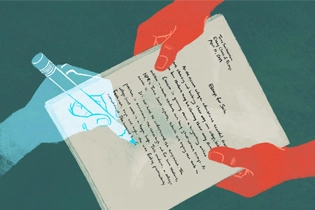
在Argumentative Essay的写作过程中,修辞手法的运用犹如调色盘上的各色颜料,能够赋予语言以生动、形象、感染力。本文将为大家详细介绍Argumentative Essay写作中常用的修辞手法,探讨它们的作用以及如何巧妙融入文章,提升议论文的表达效果。
一、比喻与暗喻(Metaphor and Analogy):
作用: 比喻和暗喻通过将抽象概念映射到具体形象,增强读者对观点的理解和感知。
例句: "In the vast sea of information, navigating through conflicting opinions is akin to sailing through unpredictable currents; only with a clear compass of critical thinking can one steer a steady course."
二、排比与对仗(Parallelism and Antithesis):
作用: 排比与对仗通过对称的语法结构,强调论点的重要性,使文章更具韵律感。
例句: "Education instills knowledge; experience imparts wisdom. The former molds minds; the latter forges character."
三、修辞问句(Rhetorical Question):
作用: 通过提出反问,激发读者思考,引导他们在心中形成对应的答案,强化论点。
例句: "Can we afford to ignore the dwindling biodiversity around us? Are we willing to jeopardize the delicate balance of our ecosystem for short-term gains?"
四、修辞比较(Simile):
作用: 通过明确的比较,使抽象概念更具体,为读者建立更直观的认知。
例句: "The bond between teacher and student is like the delicate thread that weaves through the fabric of education, connecting hearts and minds."
五、修辞强调(Emphasis):
作用: 通过强调某一词语或短语,使其在句子中突显,引起读者关注。
例句: "It is not merely a challenge; it is a CALL to action that demands our immediate attention."
修辞手法如同音乐中的节奏,为Argumentative Essay增色添彩。在运用时,需因材施教,根据文章整体氛围和表达需求进行选择。合理巧妙地运用修辞,能够使文章更具说服力、感染力和艺术性,从而提升整体写作水平。




